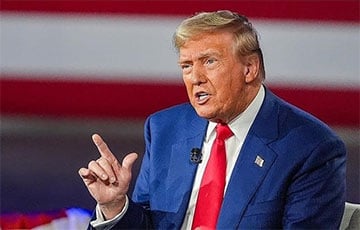BI: SBU's Dormant 'Spider Web' Drones May Attack Again
9- 3.06.2025, 12:05
- 10,268

Ukraine's unique tactics have the potential to change the rules of war.
Ukraine has carried out an attack that could change the rules of war - and not just for Russia. A new approach taken by Ukraine's Security Service to a strike on four military airfields in Russia has taken drone attack tactics to a new level, writes Business Insider.
"This attack is a window into future warfare," said James Patton Rogers, director of Cornell's Technology Policy Institute.
The SBU said Ukrainian operatives smuggled quadrocopters into Russia - the drones were hidden in wooden structures mimicking houses. In this form, they were mounted on trucks that drove as close as possible to the airfields - Belaya, Dyagilevo, Olenya and Ivanovo. After remotely opening the roofs, the drones took off and hit the targets. According to preliminary estimates, up to 41 airplanes were damaged. Losses - up to $7 billion.
Air defenses did not have time to react
In contrast to previous long-range drone attacks, the new operation focused on minimizing the path to the target. The drones were actually launched already directly from Russian territory, bypassing the S-300 and S-400.
Justin Bronk of the Royal Institute for Defence Studies said:
"This is a stunning success for Ukrainian intelligence services."
Lithuanian former foreign minister Gabrielius Landsbergis emphasized: "The scale and ingenuity of this attack show that Ukraine is now less dependent on Western support." He said the strike was carried out without notable logistical or intelligence assistance from allies.
The threat is deep in the rear
The most remote of the airfields hit was Belaya, in the Irkutsk region, more than 2,500 kilometers from the Ukrainian border. Before that, the drones reached a maximum of 1,100 kilometers. In other words, Russia has lost its sense of security even deep behind the lines.
Bronk notes that if even half of the destroyed aircraft are Tu-95 and Tu-160 bombers, it will significantly reduce Russia's ability to launch cruise missiles at Ukrainian targets.
Most of the planes were parked in open territory. Russia tried to use improvised means of camouflage - in particular, putting tires on the wings - but this did not prevent the attack.
The lack of shelters is not only Russia's problem. In the United States, for example, the modern air fleet also lacks enough hangars to protect aircraft.
"Sleeping" drones and a new phase of warfare
Ukraine has not disclosed exactly how it smuggled the drones into Russian territory, but it points to the vulnerability of Russian logistics. Patton Rogers added:
"The question is how many more of these 'cobwebs' are out there waiting to happen."
Karl Rosander, co-founder of Nordic Air Defense, warns: this is just the beginning. Drones can remain dormant in enemy territory and be activated at the most vulnerable moment. And this tactic could be used against other countries - including NATO.











